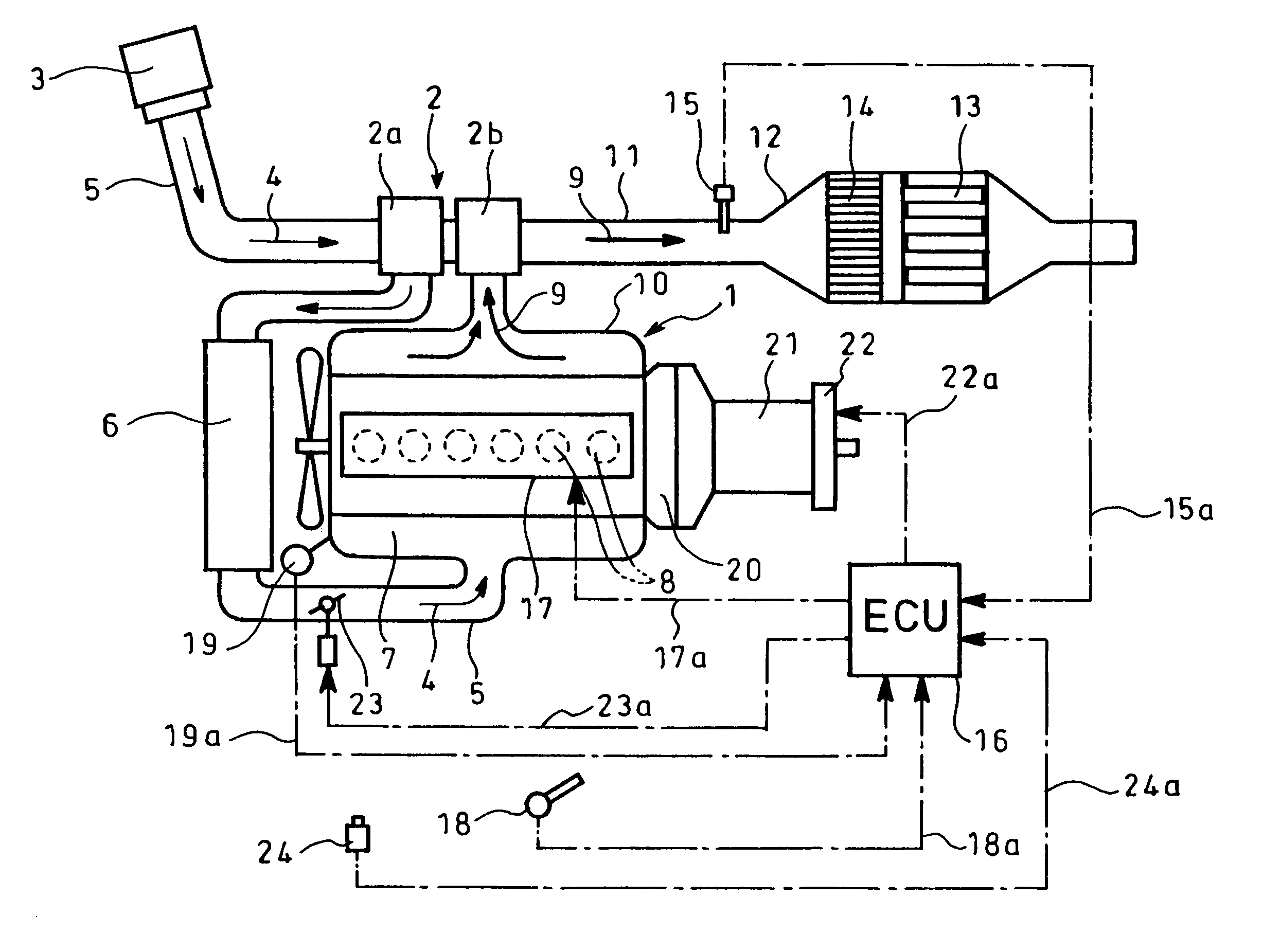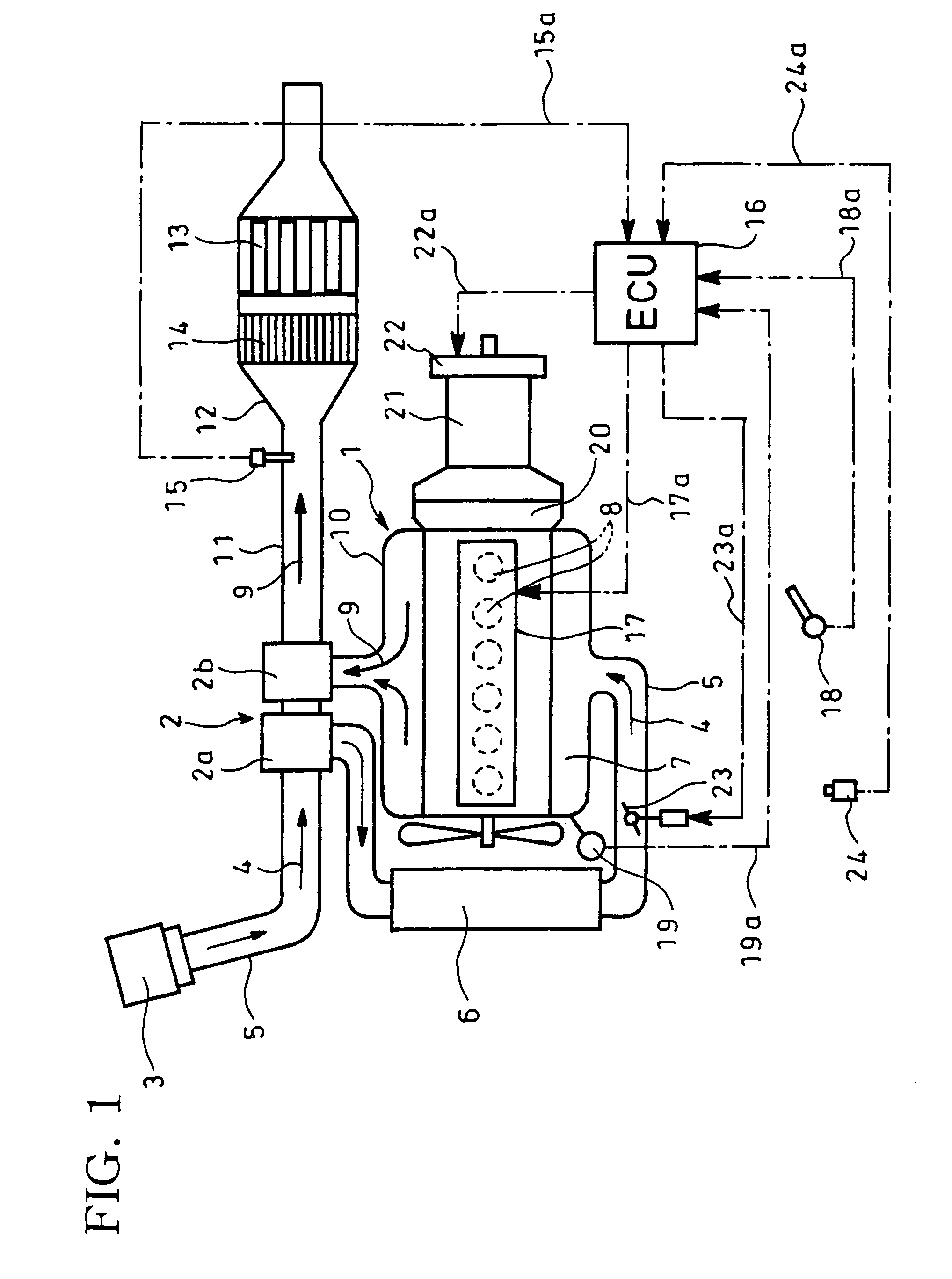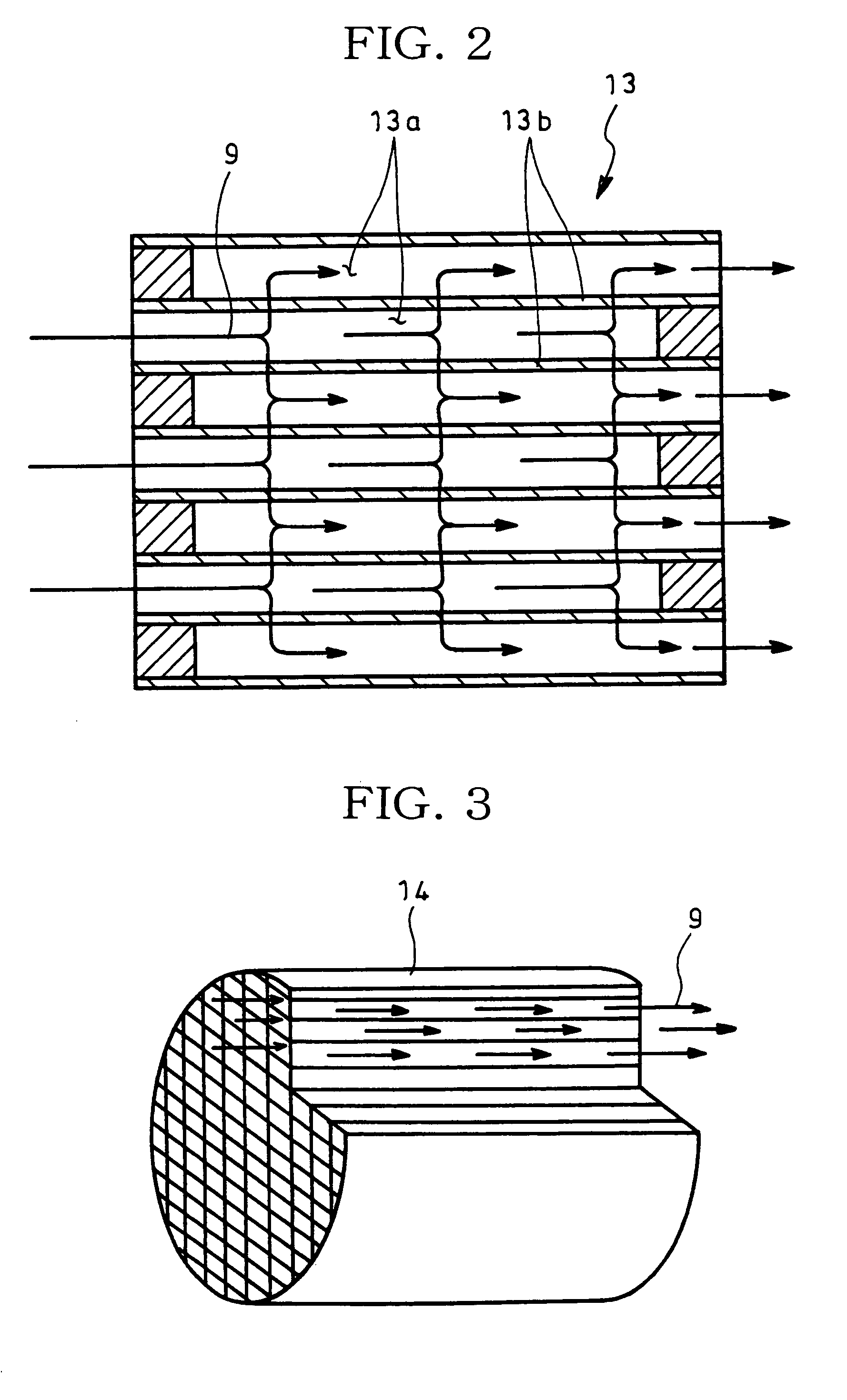Method for regenerating particulate filter
a technology of particulate filter and regenerative method, which is applied in the direction of machines/engines, electrical control, separation processes, etc., can solve the problems that the temperature of the carried catalyst of the particulate filter cannot be expected to rise, the intake flow rate of the engine in a normal operation state rarely has a chance to reach a temperature level, and the accumulation of captured particulates in the particulate filter is not expected to increase. , to achieve the effect of reducing torqu
- Summary
- Abstract
- Description
- Claims
- Application Information
AI Technical Summary
Benefits of technology
Problems solved by technology
Method used
Image
Examples
Embodiment Construction
[0025]An embodiment of the invention will be described with reference to the drawings.
[0026]FIGS. 1 to 4 show an embodiment of the invention in which reference numeral 1 designates a diesel engine with a turbocharger 2 comprising a compressor 2a and a turbine 2b. Intake air 4 from an air cleaner 3 flows through an intake pipe 5 to the compressor 2a of the turbocharger 2 where it is pressurized. The air 4 thus pressurized is cooled by an intercooler 6 and fed to an intake manifold 7 where it is distributed to respective cylinders 8 of the diesel engine 1 (FIG. 1 shows a case of an in-line six cylinder engine).
[0027]Exhaust gas 9 from the cylinders 8 is supplied via an exhaust manifold 10 to the turbine 2b of the turbocharger 2. After driving the turbine 2b, the exhaust gas 9 is discharged outside via an exhaust pipe or passage 11.
[0028]The exhaust pipe 11 has therein a filter case 12 which accommodates on its downstream side a catalytic regeneration type particulate filter 13 integra...
PUM
| Property | Measurement | Unit |
|---|---|---|
| crank angle | aaaaa | aaaaa |
| exhaust temperature | aaaaa | aaaaa |
| torque | aaaaa | aaaaa |
Abstract
Description
Claims
Application Information
 Login to View More
Login to View More - R&D
- Intellectual Property
- Life Sciences
- Materials
- Tech Scout
- Unparalleled Data Quality
- Higher Quality Content
- 60% Fewer Hallucinations
Browse by: Latest US Patents, China's latest patents, Technical Efficacy Thesaurus, Application Domain, Technology Topic, Popular Technical Reports.
© 2025 PatSnap. All rights reserved.Legal|Privacy policy|Modern Slavery Act Transparency Statement|Sitemap|About US| Contact US: help@patsnap.com



